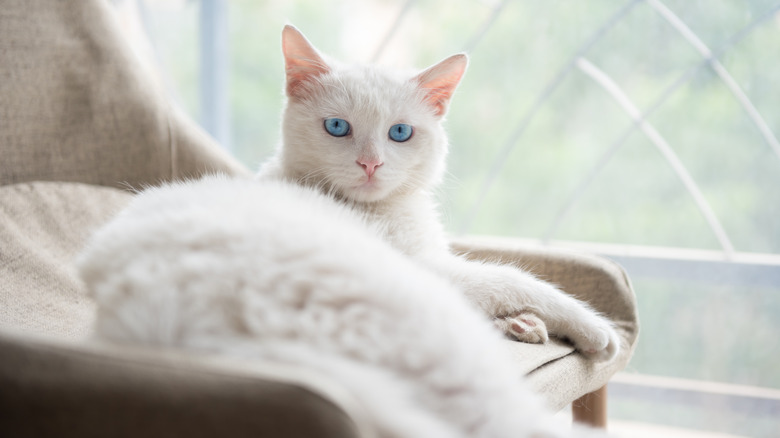A New Study Suggests How & When Cats Arrived In China Thousands Of Years Ago
It is estimated that there are approximately 370 million cats kept as pets worldwide, which exceeds the entire population of the U.S. at 347 million. The domestic housecat has become such a cultural staple around the world that it is difficult for many to imagine a time when the adorable little weirdos weren't as cherished. Yet, cats were first domesticated approximately 12,000 years ago in the Middle East, before eventually spreading their little toe beans to other corners of the globe in the decades that followed.
In China, cats are cherished pets, with an estimated 69.8 million feline companions reported at the end of 2023. In 2016, a study conducted as part of an international effort by researchers was published in PLOS One, concluding that the relationship began over 5,000 years ago. However, recent findings investigating the nuances of domestication claim that felines did not fully take on the role of beloved house pets until much later.
In a study published in bioRvx in January 2025, zooarchaeologist Yu Han and her team at Peking University examined 22 cat bone samples from across China to help determine the origin of the domestic cat. Of the samples taken, fourteen matched the modern domestic cat, indicating that their distribution in China likely occurred through the Silk Road and the sale of cats as exotic pets. Since the silk trade did not begin until 600 C.E., this places the arrival of domestic cats in China much more recently than initially speculated in the 2016 study. The reason the domestication of cats in China is now being contested relates to the clarification of what constitutes domestication.
Why the origin of domestic cats in China is now being disputed
Previous research, which drew on bones discovered at a farming village named Quanhucun, showed that the human population lived close to cats. These bones had well-worn teeth indicative of a long life, which led researchers to conclude that the people had cared for the felines to some degree. Archaeozoologist Melinda Zeder at the Smithsonian Institution's National Museum of Natural History, shared in a Science interview that these first discovered cats were likely on the "doorstep to domestication," — meaning they weren't the fully domesticated housecats of today.
The cats found in Quanhucun were not ancestors of the modern domestic cat, which evolved from African wildcats that originated in the Middle East. Instead, the cats at the site were leopard cats, which, although the same size as a housecat, have a black-spotted and sandy coat, unlike the modern pet. It is unknown how the cats at Quanhucun interacted with people, however, they would have been different from the domestic cats of today.
It is still possible that more will be revealed about cat origins, both in China and worldwide, as there is still much that researchers don't know about our history with our beloved furry companions; maybe the greatest discoveries are yet to happen. Until then, pet parents can still enjoy domestic cat behaviors, such as snuggling up for a cuddle or performing silly antics in hilarious photos.

